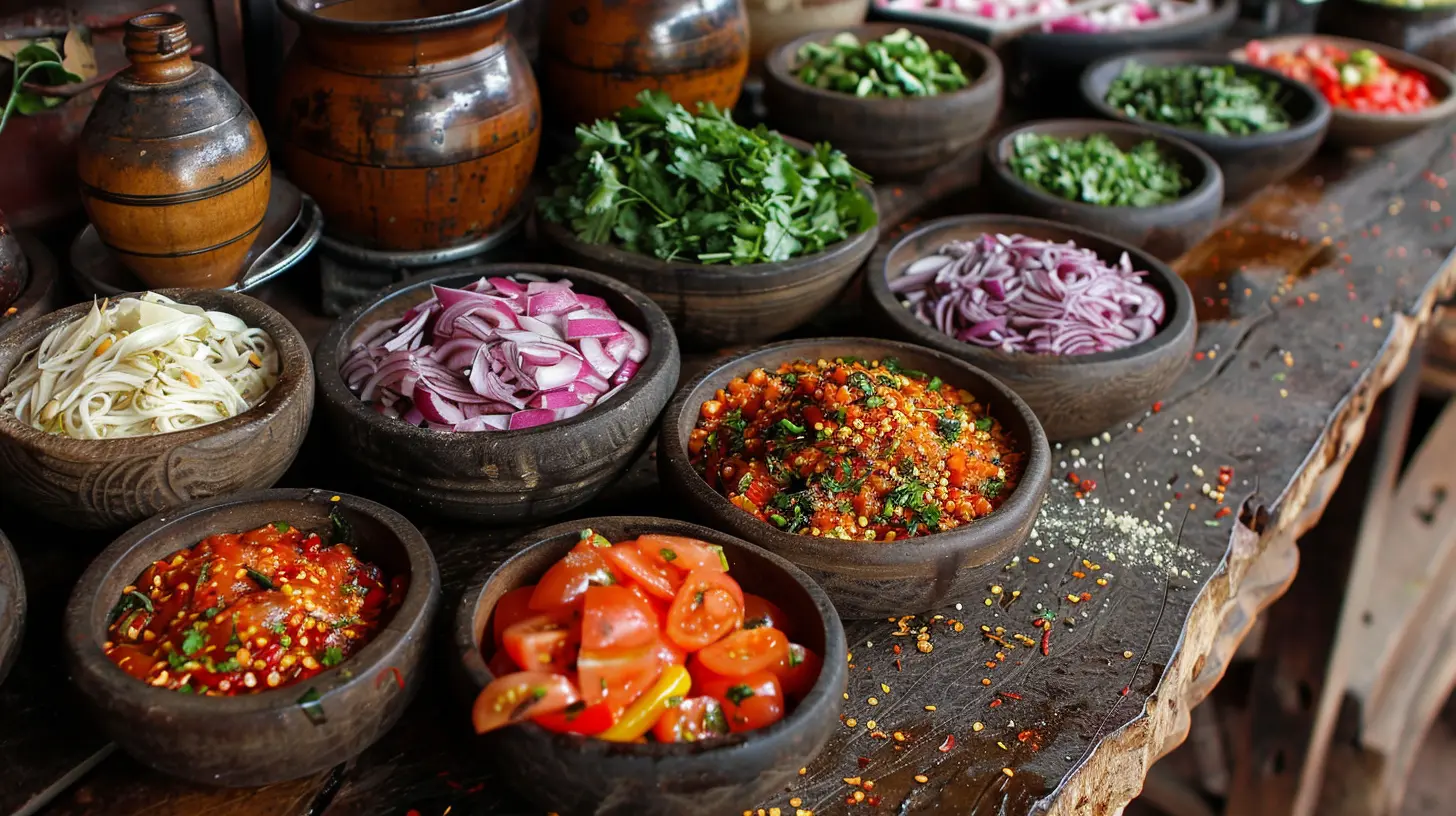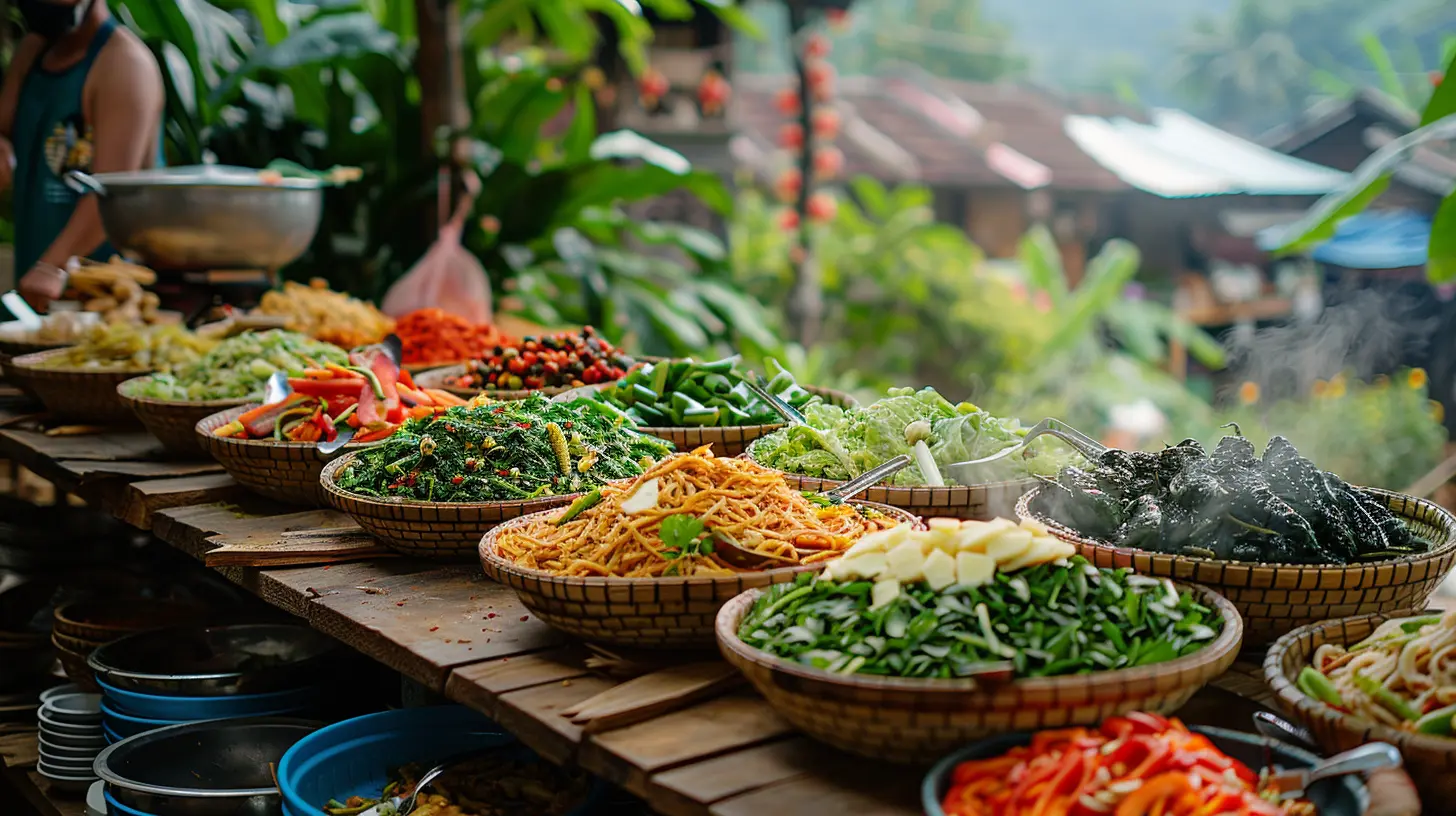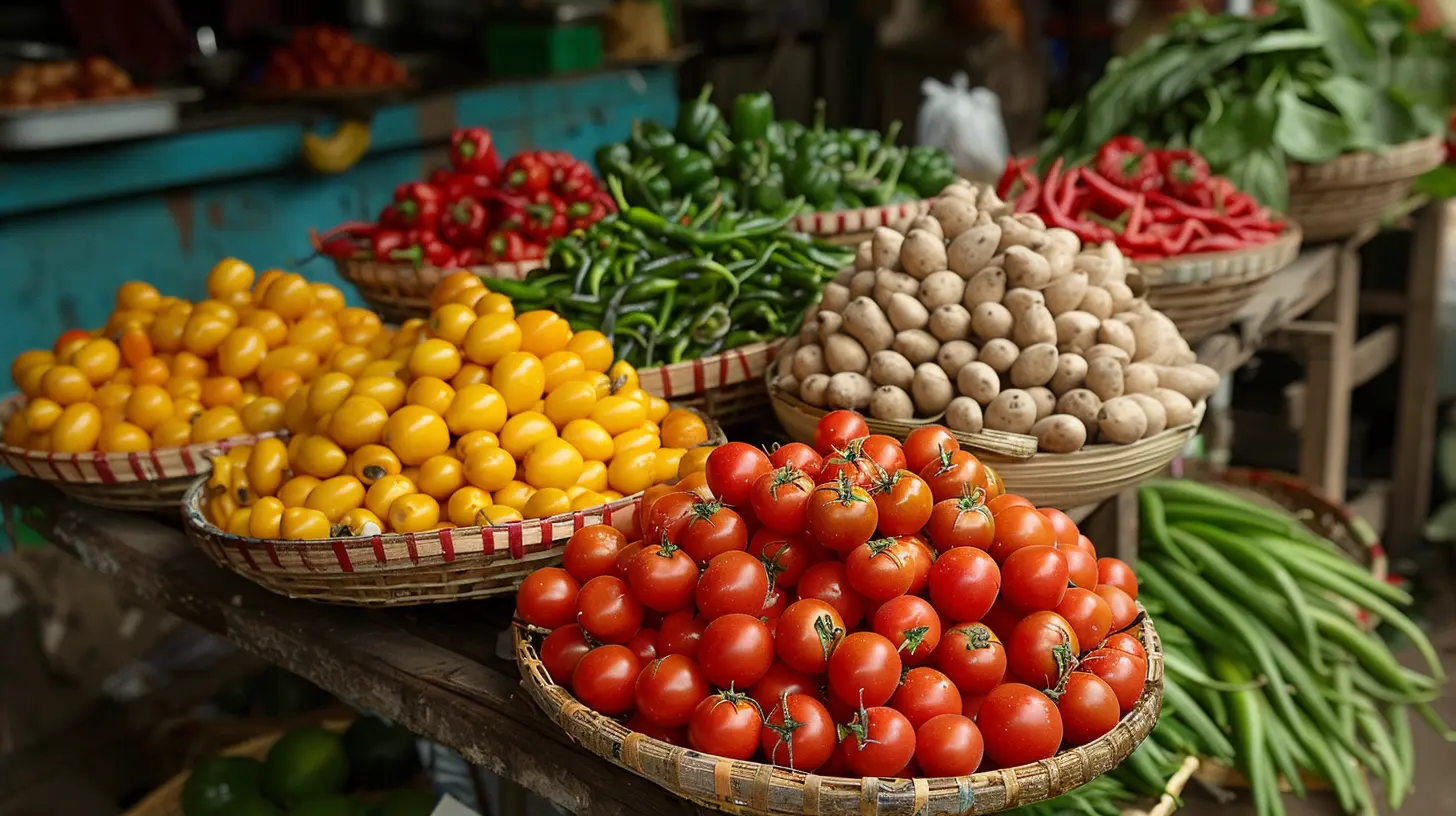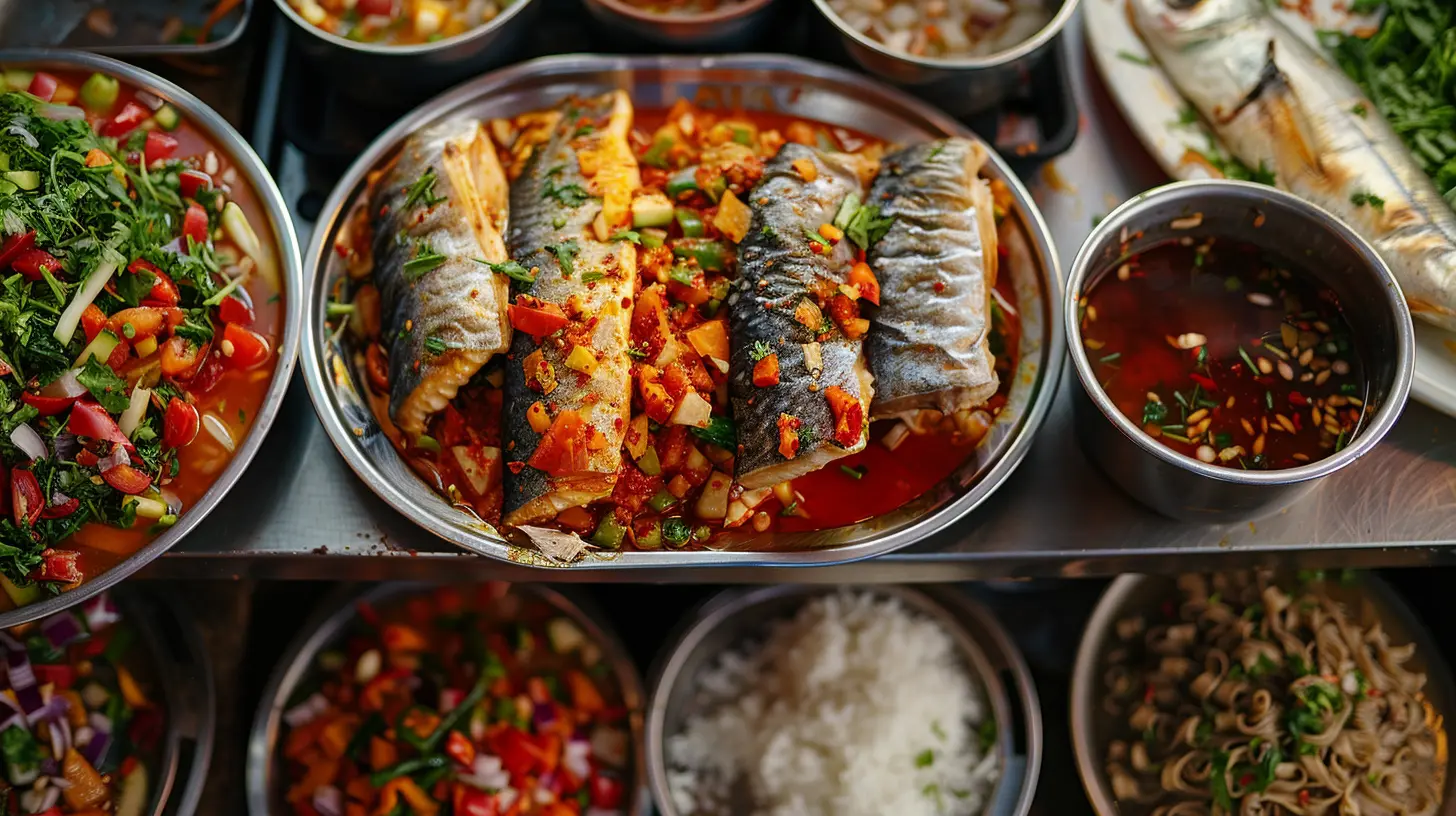29 March 2025
There’s something genuinely special about preparing a meal with local ingredients. Whether you’re strolling through a vibrant farmer's market in a small coastal town or perusing stalls in a bustling urban district, there's an undeniable connection to the food that you're about to put on your plate. And let's be real for a second—who doesn’t want their dinner to have that extra touch of authenticity and freshness?
Not only are you supporting local farmers and businesses, but you're also adding a unique character to your meal that store-bought ingredients just can't replicate. On top of that, it's a more sustainable and eco-conscious way of cooking.
But how exactly do you turn that handful of fresh produce, seafood, meats, and possibly exotic herbs you've gathered from the market into a delicious meal that leaves everyone scraping their plates? Fear not—I'm here to guide you through the entire process. From navigating your local market to preparing a savory, locally-sourced meal, this is your comprehensive guide.
Why Cooking with Local Ingredients Matters
Before we dive into the nitty-gritty of meal prep, let's take a moment to appreciate why local ingredients should steal the spotlight in your kitchen.1. Freshness Like No Other
Imagine biting into a juicy tomato that was picked the same morning from a nearby farm. That alone is a mouthwatering experience, right? Local ingredients, unlike those shipped across states or even countries, retain their flavor, texture, and nutritional value because they haven’t spent days—sometimes weeks—being transported.2. A Positive Impact on the Planet
It's not just about your meal tasting good; it's about feeling good too. Buying local reduces the carbon footprint associated with transporting food from distant locations. Plus, local farms tend to be smaller and adopt sustainable farming methods. So, you’re not just filling your belly—you’re giving the Earth a little love as well.3. Supporting Your Community
Every dollar you spend in a farmer’s market or at a local shop tends to circulate within your community, fueling local economies. In a world that’s increasingly globalized, there’s something intimate and fulfilling about knowing the people who grow your food. It’s an exchange that supermarkets can’t replicate.4. Seasonality and Variety
Cooking with local ingredients allows you to experiment with what's in season, which often means a greater variety in your meals. Seasonal produce is often more nutrient-dense and flavorful since it’s harvested at its peak.
How to Navigate a Local Market Like a Pro
1. Timing is Everything
Here's a little insider tip: Early birds get the worm. Or in this case, the freshest produce. Markets often stock up on the best selections early in the day, so if you’re aiming to pick the ripest fruit or the freshest seafood, set that alarm and get there when vendors are just getting started.2. Embrace the Seasons
Before heading out to your local market, it’s a good idea to familiarize yourself with what's in season in your region. Not only will the ingredients be at their best, but you’ll also save money since seasonal items are typically more plentiful—and thus more affordable.Pro Tip: Feeling a bit lost? Ask the vendors! They're usually more than happy to share what’s in season or recommend something based on your taste preferences.
3. Bring Reusable Bags and Containers
Sustainability doesn’t stop at simply buying local; it extends to how you bring your food home. Invest in a sturdy tote, some produce bags, and maybe even glass containers to avoid single-use plastic and paper waste.
Building Your Meal: The Basics
Alright, so you’ve got your basket filled with fresh, local goodness. Now comes the best part—cooking! But before you dive headfirst into the kitchen, there are a few important things to consider.1. Start with a Vision
Think about the theme or cuisine you'd like your meal to center around. Are you dreaming of a light, Mediterranean dish focused on fresh vegetables and seafood? Or maybe a hearty farm-to-table roast filled with root veggies and a locally raised leg of lamb?Knowing where you’re headed with your ingredients will help guide you through the cooking process and make improvising easier if needed.
2. Highlight One Star Ingredient
Let’s be real—there’s always that one ingredient that just steals the show. Whether it's the bright, citrusy flavor of locally harvested lemons or a sumptuous filet of fresh-caught fish, determining your star ingredient makes planning the rest of the meal a breeze. You want the other flavors to complement, not overshadow, this star.
Step-by-Step Guide to Creating a Locally-Sourced Meal
Let’s walk through the process of creating a delicious meal, step by step, using local ingredients. We'll keep it simple so that even beginner cooks can feel confident about their meal prep.1. Gather Your Ingredients
Let’s say you stumbled upon some vibrant heirloom tomatoes, fresh basil, locally made cheese, and beautiful cuts of grass-fed beef. Here’s what you’ll need for a basic farm-to-table meal:- Heirloom tomatoes
- Fresh basil
- Mozzarella or burrata cheese from a local dairy
- Grass-fed beef—consider steaks or ground beef
- Olive oil—the best you can find locally
- Salt, pepper, and balsamic glaze (optional)
- Seasonal veggies for a side dish (like zucchini, corn, or potatoes)
2. Prep and Cooking
It’s time to let those fresh ingredients shine. Let's keep this meal simple yet elegant.Caprese Salad Starter
- Step 1: Slice your heirloom tomatoes and fresh mozzarella.- Step 2: Layer them on a plate in alternating slices, tomato, then cheese, then tomato.
- Step 3: Tear a few fresh basil leaves and sprinkle them on top.
- Step 4: Drizzle with high-quality olive oil, salt, pepper, and a touch of balsamic if you're feeling fancy.
Boom—you’ve got a fresh, local starter that looks like a Michelin-star dish but takes mere minutes to prepare.
Main Course: Grilled Grass-Fed Beef with Seasonal Veggies
- Step 1: Season your beef generously with salt, pepper, and a drizzle of olive oil. Let it rest for about 30 minutes before tossing it on the grill.- Step 2: While the beef is resting, prepare your veggies. For this, you could cut zucchini into rounds or slice corn off the cob. Toss them with olive oil, garlic, and your favorite herbs (how about that fresh basil again?).
- Step 3: Grill your beef to your preferred doneness—medium rare, anyone? At the same time, grill your veggies until they have those lovely char marks and are tender.
- Step 4: Let your meat rest for a few minutes before slicing. Serve it alongside your veggies, maybe with a wedge of lemon or a dollop of fresh herb butter.
Simple Tips to Elevate Your Market-to-Table Meal
1. Less is More
When you're working with fresh, high-quality ingredients, resist the urge to overcomplicate things. A sprinkle of sea salt and a dash of olive oil can often be all you need to let those flavors shine.2. Presentation Matters
We eat with our eyes first, right? Arrange your dishes with care. Even rustic, home-cooked meals benefit from a bit of thoughtful placement. Want to take it up a notch? Garnish your plates with edible flowers or microgreens from the market.3. Stay Flexible
If you can’t find a particular ingredient, don’t worry! That’s the joy of cooking with local, seasonal products. There's always a substitute or a creative replacement. Maybe the stall that typically sells your favorite cheese isn't around, but you find a new one offering an artisan goat cheese that blows your mind. Adapt and have fun with it.Desserts and Drinks: Don’t Forget the Final Touches
What’s a perfect meal without dessert and drinks? Luckily, local markets often have a wide array of fresh fruits and homemade baked goods.1. Simple Seasonal Fruit
End your meal on a light note with fresh berries, peaches, or any fruit that’s in season. Serve them with a dollop of whipped cream or just plain.2. Local Beverages
Don’t overlook drinks. Perhaps your local market has a stall for freshly pressed juices, local beers, or artisan ciders. These are great to pair with your meal and keep everything in that locally-sourced vibe.Bringing It All Together: The Joy of a Market-to-Table Feast
Cooking with local ingredients isn’t just about food—it’s an experience. From the moment you step into the market, eyes wide open like a kid in a candy store, to the final bite of a fresh, satisfying meal, the process is rewarding. You're not only providing nourishment but also engaging with your community and supporting the planet.So, the next time you're itching to cook something special, skip the supermarket aisles. Head to your local market, and let the ingredients guide you. Trust me—your taste buds (and your conscience) will thank you.







Raegan O'Neal
This article beautifully captures the essence of connecting with local culture through food. Culinary experiences like these truly nourish both body and soul.
April 10, 2025 at 4:56 AM